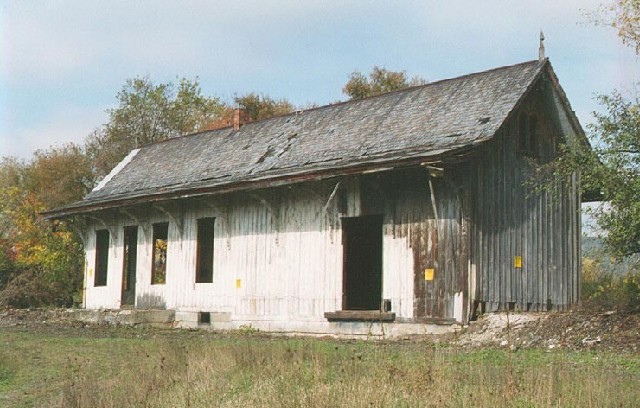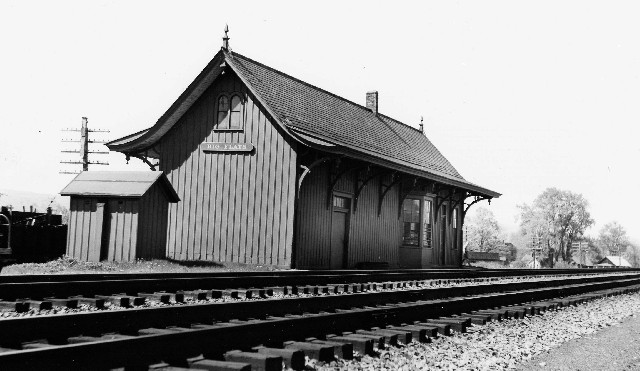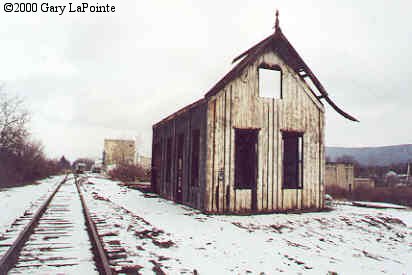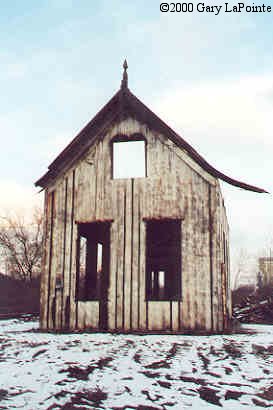Big Flats, NY
The former Delaware, Lackwanna & Western station in Big Flats
has probably reached the end of the line. Forlorn and rapidly
disintegrating under the harsh elements of weather and vandalism is this
product of one of the most progressive railroad companies ever to have
existed. The Lackawanna, the Road of Anthracite, and the Route of
Phoebe Snow is no more. Once this was a railroad to be reckoned
with, an important link in eastern transportation.
When the railroad merged with long time rival Erie in 1960, most
of the Buffalo route was deemed redundant trackage. Long sections
were abandoned. Short sections like that through Big Flats
remained as industrial spurs or feeders to the nearby Erie
mainline. But long before the merger, local passenger service had
departed this neat small town and itís railroad depot. By the
late1930ís only one passenger train called here. As the
realities of downsizing took hold of the once proud mainline, Big Flats
became one of the few survivors. The depot lingered on until being
acquired by a historical society in 1970. For reasons unknown, it
appears to be now abandoned, like a refugee who escaped only to be left
alone, friendless, and dying a slow death.
Big Flats station was built to a standard plan by the DL&W
during itís expansion westward to Buffalo in the 1880ís.
Stockyards, a cement dealer, and other typical agricultural business
flourished at one time near the depot. The building itself was
erected in 1882 at what was milepost 275 of the railroad. The
Lackawanna invested in massive infrastructure improvements starting
about 1899 that eventually reduced the overall mainline length.

Big Flats, NY. DL&Wís
Victorian era carpenters built a number of stations to this same plan on
the Buffalo line. Can no one save this classic Lackawanna depot? October
1998
Ed Weber took the
following photo of the Big Flats depot, captioned "...Looking west 5/17/58.
Tom Taber III is stepping in at the far end of the station."

Gary LaPointe sent me these photos of the depot taken in 2000. Upon a
return visit by Gary in January, 2003, the depot was gone.

